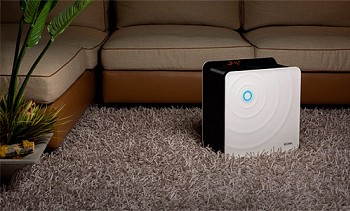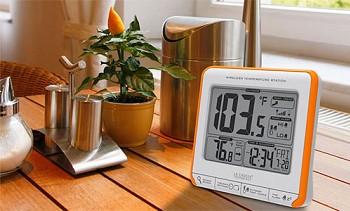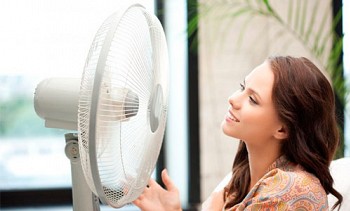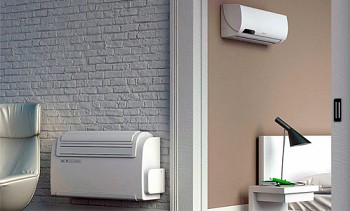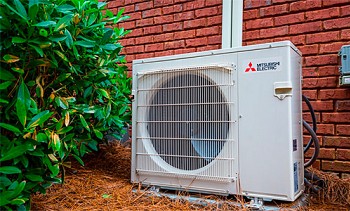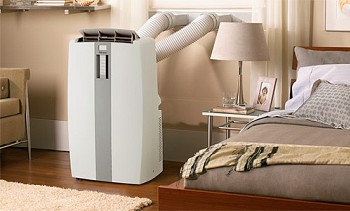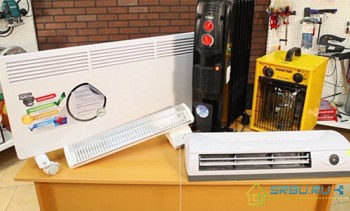Winter in most regions of our country is very long, and therefore we all look forward to summer. However, with the advent of summer, happiness does not always come: we begin to suffer from exhausting heat. It is especially hard for those who are forced to spend the entire summer season in the stone jungle. The solution is simple: you need to get an air conditioner that will cool the air in the room and thereby make your stay there more comfortable.
And you need to start with theory. Let’s try to figure out what types of climatic equipment for air conditioning today exist and how they differ from others, what functions they can perform in addition to cooling, how to choose an air conditioner for such parameters as power, economy and noiselessness. If you will not be lazy at the stage of passing the educational program, then the technique you have chosen will not disappoint you.
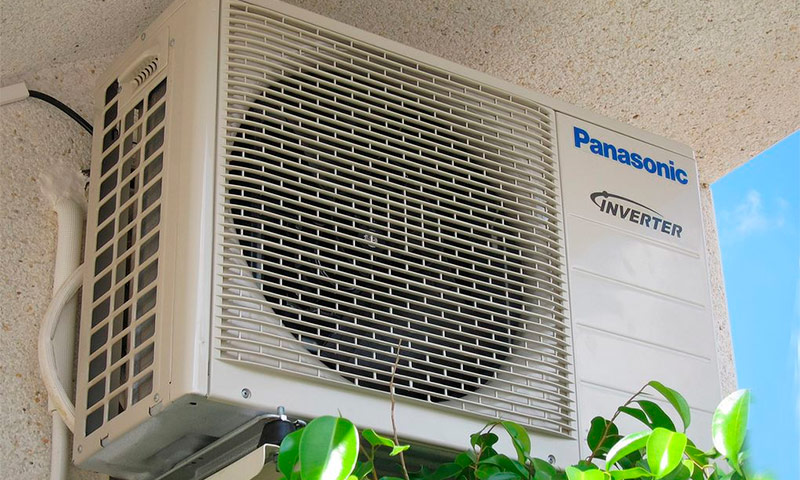
Content:
- Varieties of air conditioners in design and installation method
- Inverter and linear air conditioners
- Air conditioner
- Additional tasks that an air conditioner can perform
- How air conditioning works in various modes
- How to calculate the cooling capacity of an air conditioner
- What characteristics are important besides power
- Additional functions
- Air conditioner of which manufacturer to choose
Varieties of air conditioners in design and installation method
By design, all domestic air conditioners are divided into monoblock and two-block (the latter are also called split systems). At the same time, depending on the installation method, monoblock can be window and floor (mobile), and split systems, in turn, are divided into wall, ceiling, cassette and channel.
Monoblock conditioners
A monoblock air conditioner, as its name implies, is a one-piece design, in the housing of which everything necessary for cooling or heating the room is built-in - a compressor, a condenser, an evaporator, a fan, an air filter and a control unit. More often, such air conditioners can be seen in office or industrial premises, although they are also sometimes found in apartments and private houses.
The main advantages of monoblock air conditioners are low cost and ease of installation, which does not require the participation of professional installers with special equipment. However, their extremely low productivity and high level of noise created by them lead to the fact that the popularity of such systems decreases more and more over the years.
Window monoblocks, as you might guess, are built into the window opening. If the window frame is wooden, it will not be difficult to do this. If your house has plastic windows with double-glazed windows, you will need to replace one leaf with a new one - with an opening the size of an air conditioner.

Outdoor (mobile) the air conditioner is installed near the window, and the corrugated duct is discharged outside the premises through the ajar sash of the window or through the insert in the glass with sealing joints. Such air conditioners bribe, primarily because of their mobility: the device can easily be moved between rooms, and if necessary, even taken to the country for the summer and connected there. They are indispensable for those who often change their place of residence, for example, moving from one rental apartment to another. The disadvantages of mobile air conditioners include limited power, increased noise during operation, and the need to manually remove condensate.

Two-block (split systems)
A two-block air conditioner, also called a split system, consists of two parts - an external unit mounted on the outer wall of the building, and an indoor unit located indoors.The compressor and condenser are located in the external (street) block, and the evaporator in the internal (room) block. Between themselves, these two blocks are connected by tubes through which the refrigerant circulates.

One of the varieties of such air conditioners is a multi-split system, in which one, but quite powerful external unit has several internal ones.
Split systems today are the most popular devices for maintaining a comfortable indoor climate. This is not surprising, because they have a low noise level, are more efficient than comparable-sized monoblocks, and at the same time they consume energy more economically.
For a device with so many advantages, it’s necessary, of course, to pay a pretty decent amount for many: the cost of two-unit air-conditioners of economy class is 15-20 thousand rubles. and more. The split system also has one more drawback: to install it, you will have to involve professional installers (otherwise you will lose the guarantee), which means additional costs. For many potential buyers, the fact that the majority of two-unit air conditioners are not able to work at negative air temperature outdoors can have a significant impact on the choice.

Outdoor unit split system.
As well as monoblock air conditioners, two-block air conditioners are divided into several types depending on the installation method:
Wall mounted two-unit air conditioners are the most popular and widespread variety of this climatic equipment. More than 80% of split systems sold today are of this type. Their compact internal unit, as a rule, has a pretty design and fits pretty well in almost any interior.

Floor and ceiling split systems are ideal for office or retail premises with a large glazing area. Glass walls are unsuitable for mounting the wall-mounted indoor unit, the most optimal option in this case is not to place it on the wall, but near the wall - under the ceiling or on the floor.

Such universal devices create a rather pleasant microclimate in the room: the air flow is directed along the ceiling or wall, depending on the installation site, and not on people in the room.

Cassette air conditioners are primarily designed for large areas. They can be found in the trading floors of supermarkets, hotels, catering establishments, conference rooms and cinemas, large office rooms, workshops and workshops. Cassette air conditioner easily fits into any interior, as we see only its decorative lattice, while the indoor unit itself is hidden from our view behind the suspended ceiling of the room.

Cooled air in such systems is supplied through the bottom panel of the evaporator unit. At the same time, air flows are directed in all four directions, which makes air conditioning uniform and soft. Another great advantage of cassette models is the ability to mix a portion of fresh into the room air, for this it is enough to lay an additional duct leading outside the building.
Channel air conditioners, as well as cassette ones, are designed for installation behind a suspended ceiling and are used at large facilities, including industrial and semi-industrial ones. A stream of cool air is guided by a channel split system through a special duct built into the side panel of the indoor unit, and there can be two, five, ten or more similar ducts. As well as cassette air conditioners, ducted air conditioners make it possible to evenly distribute chilled or heated air throughout the room (and in the presence of several ducts - across several rooms) and to introduce portions of fresh outdoor air.

1. The outdoor unit. 2. Air duct. 3. Air distribution grille. 4. The indoor unit.
Inverter and linear air conditioners
There is another classification of air conditioners - according to the principle of the electrical control system. According to this classification, all devices are divided into inverter and linear.
Conventional compressor linear air conditioner always running at full power. In this case, the temperature control in the room occurs by cycling the device on / off: when the set temperature is reached, the air conditioner turns off, when the air heats up again (or cools down if it is a heating mode), the temperature sensor will give a signal to turn it on. In practice, the temperature curve in the room where the linear air conditioner is installed is zigzag, and people sometimes feel uncomfortable due to temperature changes
IN inverter air conditioners Compressor engine speed changes smoothly and continuously. Such regulation of speed over a wide range is possible due to the fact that in the inverter the alternating current is converted to direct and then again to alternating, but different, required frequency. At the same time, the productivity of the device and the amount of electricity consumed by it are constantly changing.
Inverter split systems have a number of advantages that linear units do not have:
- quick access to a given temperature regime and its more accurate maintenance;
- high energy efficiency due to the lack of frequent compressor starts (in comparison with linear air conditioners, they save up to 60% of electricity in cooling mode and up to 45% in heating mode);
- low noise operation.
It is predictable that the cost of such equipment will be significantly higher than the technically simpler linear air conditioners. Repair will also be costly if the control board suddenly fails.
Visually about the difference between inverter and linear air conditioners, see the video:
Air conditioner
The air conditioner, regardless of the number of units, consists of the following elements:
- a compressor that compresses the refrigerant and makes it circulate through the tubes of the circuit;
- a condenser that transfers the refrigerant from a gaseous state to a liquid;
- an evaporator converting the refrigerant from a liquid state to a gaseous one;
- closed-circuit copper or aluminum tubes connecting the elements described above and containing refrigerant (freon);
- capillary tube, which reduces the pressure of the refrigerant before entering it into the evaporator;
- fans that increase the heat exchange rate of the evaporator and condenser with the external environment;
- four-way valve used to switch the cooling - heating modes;
- temperature sensors;
- electronic control system;
- filter system.

1. Refrigerant lines.
2. Filter.
3. Capacitor.
4. Electronic board.
5. Rotary blinds.
6. Evaporator
7. Fan.
8. Four way valve.
9. Connection fittings for refrigerant lines.
10. Compressor.
11. Fan.
The compressor, condenser and one of the fans are located in the external (street) block of the split system. The air, which, thanks to the fan, continuously “washes” the hot condenser grill, takes away the excess heat from the latter. In the indoor (indoor) unit are the evaporator and the second fan. The air blown through this unit is in contact with the ice evaporator and is thereby cooled. The external and internal blocks are connected by contour tubes.
What is the separation into two blocks for? Solely for the sake of facilitating the process of removing the generated heat. In principle, all structural elements of the air conditioner can be placed in one case. It is this option that is implemented in monoblock models. They heat is removed to the outside through a special duct brought out onto the street.
Additional tasks that an air conditioner can perform
The main function of the air conditioner, of course, is the cooling of the air in a residential or non-residential building. However, the capabilities of modern split systems are much wider.Many of them are capable of performing a number of other tasks, namely:
- heating;
- drainage;
- hydration;
- ventilation.
Many modern air conditioners are able to heat, but do not consider them as heating appliances. It is not recommended to switch on the split system in heating mode in winter frost. Firstly, she still will not be able to warm the room fully. Secondly, at low temperatures, the oil in the compressor thickens and loses its properties, as a result of cold start leads to premature wear of parts. The heating mode is often used in the off-season, when the heating season has not yet begun or has already ended, and the weather is already (or still) cool (-5 ° C ... + 5 ° C).
In humid climates, the dehumidification mode that some air conditioners are equipped with will be useful - it can significantly improve heat tolerance. However, even without this function, the air conditioner drastically dries the air, and this should be taken into account when choosing climate equipment.
Residents of regions with excessively dry climates, on the contrary, require air humidification, which air conditioners with a humidification mode can do well. Since excessively dry air is harmful to the respiratory system, such air conditioners can be useful for people with lung diseases, however, before buying, it will not be superfluous to consult a doctor.
And finally, the air conditioner may not cool or heat the air, but simply “drive” it with a fan. This helps to create a uniform temperature background in the room, i.e. uniform distribution of warmer or colder air in it.
How air conditioning works in various modes
After we got acquainted with the main modes of the air conditioner and their purpose, it is time to find out how the device works in each of these modes.
Cool Mode
When the air conditioner is turned on in cooling mode, the refrigerant in the gaseous state starts to flow from the evaporator to the compressor. In the compressor, the refrigerant is compressed, its pressure rises from 3-5 to 15-25 atmospheres, and at the same time it warms up to 70-90 ° C. Next, the compressed refrigerant is sent through the tubes of the circuit to the condenser.
There, thanks to the intensive operation of the fans, it is gradually cooled to 30-40 ° C. When cooling, the refrigerant condenses. In the capillary tube, where the liquefied refrigerant enters at the outlet of the condenser, there is a partial drop in its pressure and a further decrease in temperature. Once again in the evaporator, the liquid refrigerant goes into a gaseous state, while heat from the outside is actively absorbed. As a result, the air pumped by the air conditioner and passing along the evaporator is cooled. The gaseous refrigerant enters the compressor again and the cycle repeats.

As you can see, an air conditioner by the principle of its action is no different from a refrigerator. Only the refrigerator freezes its chamber, and discharges excess heat into space, and the air conditioner cools the room, and removes excess heat to the street.
Heating Mode
In order for the air conditioner to work in heating mode, it is equipped with a special four-way valve that can change the direction of refrigerant flow. The principle of operation in this mode is similar to that described above. The only difference is that the refrigerant goes through the stages of increase and decrease in temperature, high and low pressure in the reverse sequence, i.e., the blocks functionally change roles. As a result, the condenser located in the outdoor unit is cooled, and the evaporator of the indoor unit is heated. The latter gives up the accumulated heat to the air pumped by the air conditioning fan.

Dry mode
When the air conditioner is in the drain mode, the moisture contained in the room air condenses on the cooled surface of the evaporator. Condensate collects in a special tray and is gradually discharged through a plastic drainage pipe into the sewer system or to the street.In theory, when the air conditioner is operating in this mode, the temperature in the room should decrease, which is not always necessary. Avoiding this helps to reduce the speed of the fan forcing air: moisture on the radiator condenses, but the air temperature in the room practically does not change.
Ventilation Mode (Fan)
When the air conditioner is in ventilation mode, its compressor is turned off, and the movement of the refrigerant through the system is completely stopped - only the fan of the indoor unit works, mixing the air inside the room.
How to calculate the cooling capacity of an air conditioner
One of the main characteristics of any air conditioner is the cooling power. The climatic equipment labeling contains numbers corresponding to its cooling capacity, expressed in thousands of British thermal units (1 BTU / h = 0.293 W).
How to choose an air conditioner for home or office by such a parameter as cooling capacity? Technique with which indicator is needed to maintain a comfortable temperature in a particular room?
If we are talking about a small house or apartment, then it is quite acceptable to carry out calculations according to a simplified scheme that correlates the required cooling capacity with the area of the room. It is assumed that 1 kW (i.e. 3.41 kBTU / h) is sufficient to condition a room of 10 m2 (with a standard ceiling height of slightly less than 3 m).
If you want to make a more detailed calculation, which is especially important when determining the required cooling capacity of the air conditioner, which will be installed in a large area, you will need to take into account many additional parameters, including:
- number of storeys;
- location of the room (sunny or shadow side);
- ceiling height;
- glazing area;
- the average number of people in the room;
- the amount of thermal energy released during the operation of household appliances and lighting devices.
So, for example, each person in the room brings about 100-150 watts of heat, through the windows located on the sunny side, about 300-400 watts per square meter of glazing is supplied, the heat released during the operation of household appliances and light bulbs is calculated from rated power using a heat release coefficient of 0.3, etc.
There are a lot of factors and parameters that need to be taken into account when conducting a detailed calculation of the cooling capacity of the air conditioner, so it is better to delegate this work to professionals.
What characteristics are important besides power
Cooling power is a rather important, but far from the only characteristic of climatic equipment. Consider what else to look for when choosing an air conditioner.
Energy efficiency class
Profitability - a characteristic that can be assessed simply by looking at the air conditioner's passport. Spelled out there energy efficiency class the device is indicated in Latin letters - from A to G. Models corresponding to class A are the most economical. However, in stores you are unlikely to be able to find a split system with an energy efficiency class below A. The vast majority of air conditioners manufactured today are already in class A ++ or even A +++.
Energy efficiency ratio
Another parameter by which you can judge the profitability of the air conditioner is energy efficiency ratio. For HVAC equipment, two efficiency factors are used - EER and COP. The EER coefficient is the ratio of the cooling capacity of the air conditioner to the electrical power it consumes. If you plan to use an air conditioner to heat the room, then you need to pay attention to the COP coefficient, which is the ratio of the generated thermal energy and the consumed electric energy.
A performance factor of 3 or more is considered good. With this indicator, a 3 kW air conditioner will consume 1 kW of electricity.It is clear that the higher the efficiency coefficient of the air conditioner, the less you will have to pay for a comfortable room temperature.
Noise level
For many potential buyers of air conditioners, a parameter such as noise level. For the quietest inverter split systems, the noise level does not exceed 20 dB. To understand whether it is a lot or a little, it is enough to compare it with the requirements of the Law “On Silence”, according to which the noise level at night should not exceed 30-45 dB. The noise from technology with 20 dB is commensurate with the ticking of a wall clock or a whisper of a person. Non-inverter models are somewhat noisier - from 30 to 45 dB: at night such a sound will bother you a little, but during the day you will stop noticing it.
Additional functions
In some models of air conditioners, there may be some additional modes and functions. All serve solely to enhance ease of use. Some models even have too many extra features. Before choosing such an air conditioner for an apartment or a country house, think about how much these functions you really need, because you will have to pay for increased comfort.
Sleeping mode
The Sleep Mode creates ideal conditions for a night's rest. This mode provides for reduction of noise produced by the air conditioner, which is achieved by reducing the number of fan revolutions. In addition, the night-time air conditioner gradually lowers the room temperature by 2 ° C, thereby simulating nighttime cooling. By morning, the temperature rises again to a comfortable level.
3D stream function
The 3D-flow function allows you to adjust the direction of movement of the cooled air not only up and down, as in most conventional air conditioners, but also to the right and left. In the most “advanced” models, the direction of the air flow can be set by the position in the space of the remote control - where the remote control is, the breeze blows there.

Timer
The timer sets the on / off time of the air conditioner. With this feature, you can be sure that by the time you return from work, your home will be fresh and cool.
Turbo Function
The Turbo function is useful when you need to quickly cool or warm the room. When this mode is activated, the air conditioner will operate at full power until the set temperature is reached.
Air cleaning
Air purification is realized due to additional filters. Most modern split systems have only one filter that protects our lungs from dust (and at the same time a heat exchanger). A number of models are equipped with additional fine filters as standard, capable of capturing the smallest particles, for example, plant pollen, as well as all kinds of smells and cigarette smoke. If your air conditioner does not initially have such a filter, it doesn’t matter: it can be purchased separately. By the way, fine filters, unlike conventional ones, cannot be restored. They will have to be replaced from time to time. Their service life depends on air pollution, but in a large city rarely exceeds 3-4 months.
Self diagnosis
Self-diagnosis is a function due to which you can determine the cause of a malfunction of the air conditioner if necessary.
These are not all the additional features that can be found in modern air conditioners. The more expensive the unit, the more diverse is its intelligent control system for the quality of the indoor microclimate. For example, the 3D I-SEE function: an air conditioner, using sensors that detect movement, “counts” how many people are currently in the room, and based on this, it adjusts its performance (and in some cases the direction of air flow). In a word, any whim for your money.
Air conditioner of which manufacturer to choose
Today, hundreds of models of air conditioners from dozens of manufacturers are presented on the market for HVAC equipment. But the richer the choice, the harder it is to make it. Which brand do you prefer?
1. The best manufacturers of air conditioning equipment are considered Japanese Daikin, Mitsubishi, Toshiba, Fujitsu. Their air conditioners have high efficiency ratios, are manufactured using high-quality components, are characterized by good reliability and a large amount of functionality. The cost of such equipment of the "elite" class starts from 25 thousand rubles.
2. In the category of “good quality at an affordable price”, Korean Hyundai, LG and Samsung and Japanese Panasonic and Hitachi are leading. In this price segment there are both American products (General Electric, Fedders, Carrier), and European products (French Airwell and Italian Delonghi, Argo and Mariani Clima). The cost of air conditioners of these brands - from 20 thousand rubles.
3. The economy class is represented mainly by the products of Chinese companies - Gree, Haier, Midea, Dantex. The average cost of these air conditioners is from 15 thousand rubles.
Those who, due to their limited financial capabilities, are forced to look in the store first of all at the price tag of the product, and only then at its characteristics, we want to warn against a fairly common mistake. Many in an attempt to save money acquire equipment from the "gray", i.e. informal importers. If you choose this path, then with a high probability you will slip an air conditioner, assembled at one of the semi-underground factories in China or rejected at a company factory. There is the only guaranteed way not to become the owner of equipment with low build quality and disappointing fragility - use the services of official dealers or large suppliers.

By the way, when planning your budget, do not forget that your expenses will not be limited to the purchase of the air conditioner itself - in the estimate you still need to include payment for the services of installers. In the off-season, installation by specialists will cost you 20-25% of the cost of a split system, in summer, prices usually increase and can reach 40% of the cost.
Your choice can be considered successful if you manage to achieve the optimal ratio of the cost of the unit, the reliability of its design and the amount of comfort that it can provide.



